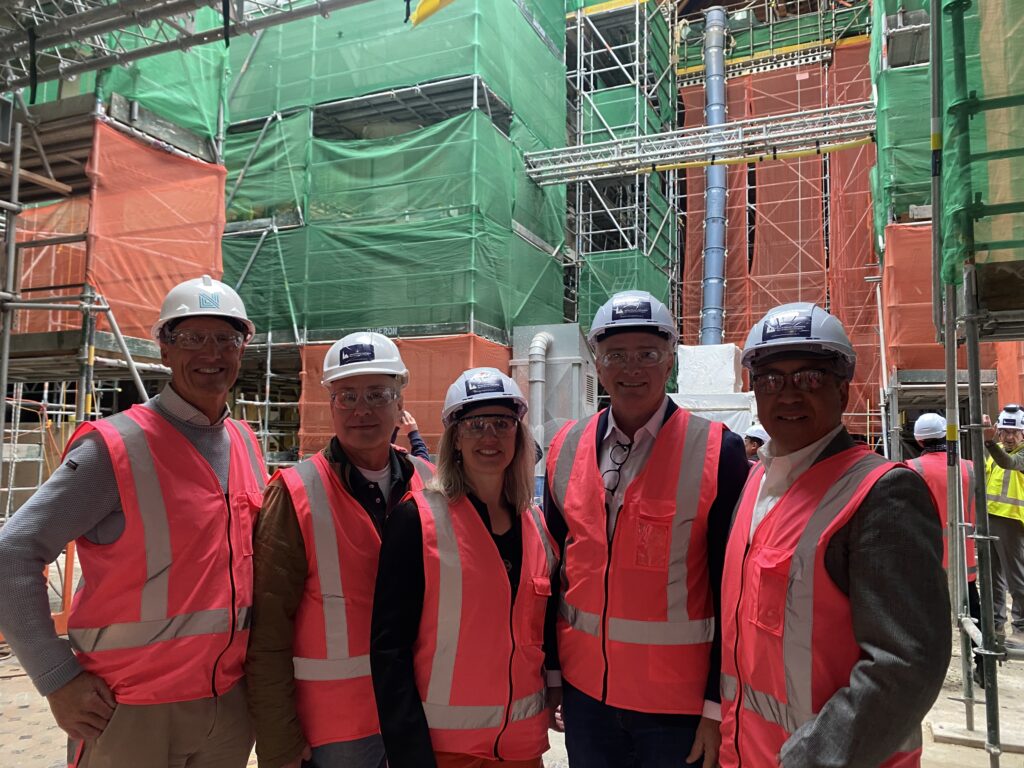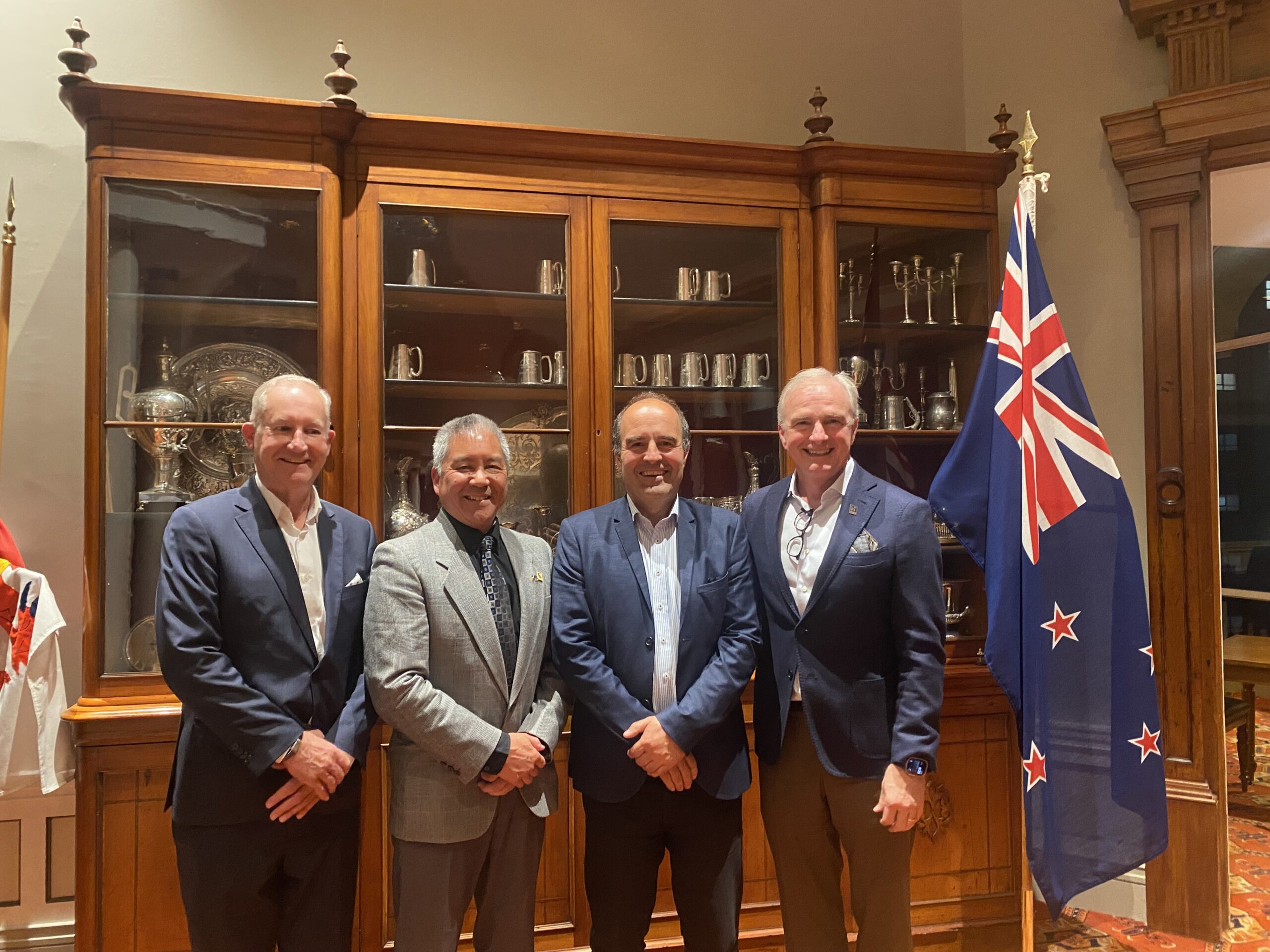
International Code Council Global Collaboration Opportunities Identified in Oceania
Board President Stuart Tom shares his experience at the 2023 Inter-Jurisdictional Regulatory Collaboration Committee meeting.
I recently returned from a visit to New Zealand and Australia, where the New Zealand Ministry of Business, Innovation & Employment hosted the annual meeting of the Inter-Jurisdictional Regulatory Collaboration Committee (IRCC) in Christchurch.
International Code Council CEO Dominic Sims and I, along with several Code Council staff members, took the opportunity of being in the region to hold meetings with approximately 20 different government entities, standards developers, building officials and industry groups over the course of two weeks.

Our aim was to discuss and promote collaboration with a wide range of stakeholders in the building safety space, as well as to continue to build the Code Council family of solutions brand within the region.
Emphasizing the Importance of Existing Building Safety
The IRCC meeting included a deep-dive discussion on existing buildings – something that is very relevant to the Code Council as our G7 Guideline Committee comes close to finalizing the first draft of our Existing Building Inspection Guideline.
SEE RELATED: Existing Building Safety – A Guideline for Inspection
We presented an overview of this forthcoming Guideline and heard from other countries around the world as they address important issues related to existing buildings, including improving their energy efficiency, change of use, accessibility, and structural reliability and seismic retrofitting.
Many of the discussions surrounded the unintended consequences of changes to buildings and echoed the discussions that I have with Code Council members in the United States. As prior Code Council board presidents have reported after attending this global meeting, engaging in discussions with counterparts around the world really does demonstrate that so many of the challenges we face in our industry are global and apply regardless of the nature and origin of the building safety regulations that are implemented and enforced.

The Responsibility of Building Safety
In the many meetings with local and national government, non-governmental, and private sector organizations, one of the strongest takeaways for me was the pervasive culture of personal responsibility and corporate social responsibility. In the United States, we have a strong belief in the individual, and this is indeed enshrined in our constitution. However, the relationship between the individual and the state in both New Zealand and Australia seemed somehow different.
One notable example of this came across very clearly in the insightful discussion I was fortunate to have with Fire Chief Matthew Smith of the Rural Fire Service base in the state of New South Wales in Australia. Chief Smith is on the front lines of managing Australia’s response to bushfires, which, as in the United States and in many other countries around the world, are becoming more frequent and severe because of drought and heat, and whose seasons are expanding every year.
Chief Smith explained to me that bushfire evacuations are not ever mandatory in Australia; rather, occupants likely to be impacted by bushfires are notified and held responsible for their decision to evacuate or not. For those who choose not to evacuate, it is understood that the Rural Fire Service will not be in a position to evacuate them or deploy additional resources to protect their personal properties.
The approach to energy efficiency in buildings is also slightly different from the discussions we hear in the United States, with much more of an acceptance of the need to increase efficiency to respond to increasing costs and to better enable passive survivability in the wake of a disaster event. The actions taken in this space seem to be largely separated from any debate about the causes or existence of climate change, and instead a response to observed changes in hazard patterns and economics.

Another insight that I gained was a better understanding of the building codes used in both Australia and New Zealand, which led with performance as their foundation. The International Codes® (I-Codes) reference many standards that provide prescriptive instructions to designers and code enforcement officials about how to implement the outcomes specified in the codes. If an alternative pathway to compliance is used, this performance solution can be approved by the building official based on a demonstration of substantial (or better) equivalence – and this is often made much easier if the product, system, or process is deemed compliant through the use of an ICC Evaluation Service Report (ESR).
In the performance-led system used in Australia and New Zealand, the codes do not prescribe how the outcome should be achieved. Instead, outside the code, certain “deemed to satisfy” solutions have been approved and are frequently the default designs used. Performance or Alternative Solutions can also be used for compliance with the codes, and hierarchies of the means for assessing compliance with the codes are defined by both countries in the code or supplemental materials. The use of the Performance or Alternative solutions can also be demonstrated to comply with codes with an ESR that considers compliance with the Australian National Construction Code (NCC) and the New Zealand Building Code (NZBC).
Whether designers or building officials are enforcing a prescriptive-led code like the I-Codes or a performance-led code like the NCC or NZBC, there is the same strong desire for guidance about how to ensure compliance with the code. We repeatedly heard from our counterparts that building design professionals often ask “just tell me what to do” – which should seem familiar to many members of the Code Council practicing in the United States.
Collaborating on a Global Scale
The similarity of the challenges that I saw in our discussions during this trip reinforces my belief that the Code Council made the right decision several years ago to proactively and holistically reengage globally and to launch a global strategy along with our Vision 2025 strategic plan. To be clear, this is not about global commiseration about the challenges that we face in our industry; rather it is about what we can learn from the experiences of our global counterparts, and what solutions we can offer to address the pain points that exist in other countries and systems.
Together we can formulate advanced solutions and avoid duplication of efforts – and in the process hopefully, we can even create some harmonization that enables trade and technological development.
Having a regional office in Canberra, through which our Code Council Oceania colleagues can collaborate from a position of deep understanding of the systems and practices in use in these markets, facilitates the commitment to ongoing, in-person engagement that is necessary for long-term success in any international market.

Globally, engagement does not always start with the use of the I-Codes, and the importance of understanding the unique needs of the market and stakeholders in the building safety space often involves a great deal of education and development. It frequently involves a much longer project lifecycle than the work that we do in the United States, especially if we are not a known quantity, as was largely the case in Oceania.
Those at the Code Council involved in global projects have long understood this, and after only a year of on-the-ground engagement in Australia and New Zealand, the added value of our regional office is clear. I could see and feel a great deal of momentum and excitement in the conversations we had, and I look forward to seeing what results from our continued engagement.
Click here to learn more about how the Code Council provides a fully integrated set of support products and services that facilitate the adaptation, adoption, implementation and continued maintenance of our codes and standards worldwide.






